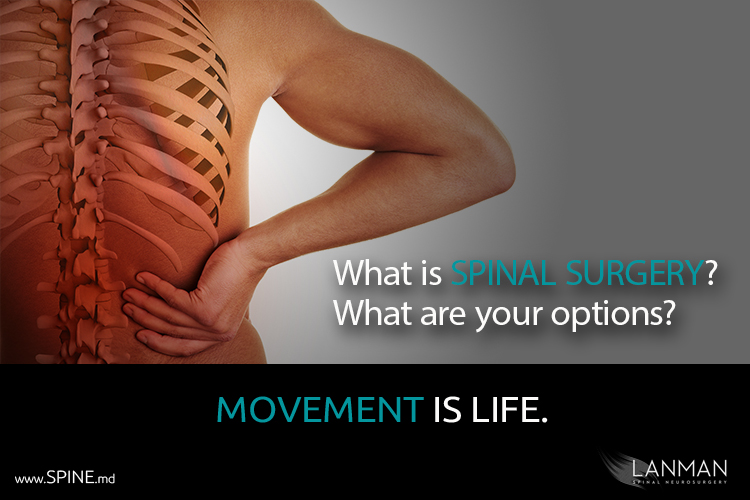The vacuum disc phenomenon refers to the presence of gas, primarily nitrogen, within the intervertebral discs of the spine. It is often seen on imaging studies like X-rays or CT scans as translucent or lucent areas within the disc spaces. While vacuum disc phenomenon can be an incidental finding, it is generally considered a sign of advanced disc degeneration and can have significant implications for spinal health. Vacuum disc phenomenon can cause spinal instability, compressed nerves, reduced height between spinal bones, and may accelerate degenerative disc disease.
Causes and Mechanisms of Vacuum Disc Phenomenon
The primary cause of vacuum disc phenomenon is degenerative disc disease, which involves progressive degeneration and dehydration of the intervertebral discs. Degeneration and loss of volume allows gas, usually nitrogen, to accumulate in the center of the spinal disc. The vacuum effect within the disc can further reduce disc height and even collapse, potentially leading to spinal stenosis (narrowing of the spinal canal) or foraminal stenosis (narrowing of nerve root openings). In some cases, the vacuum phenomenon may also cause herniation of disc material or gas itself, compressing the spinal cord or nerve roots and leading to radiculopathy or neurological deficits. The vacuum disc phenomenon is often a sign of advanced disc degeneration, which can initiate a degenerative cascade affecting other spinal structures, such as facet joints, ligaments, and muscles, further compromising spinal stability and function.
Symptoms and Diagnostic Methods
Common Symptoms Associated with Vacuum Disc Phenomenon
Vacuum disc phenomenon may not cause any symptoms, especially in its early stages
If it does cause symptoms, it is typically associated with chronic neck or low back pain
Other potential symptoms include radiculopathy (radiating pain), neurological deficits (numbness, weakness), or spinal instability/deformity
Diagnostic Imaging Techniques
Vacuum disc phenomenon is very difficult to diagnose through history and physical examination alone
It is typically diagnosed through imaging studies like radiographs (X-rays), computed tomography (CT) scans, and magnetic resonance imaging (MRI)
CT scans are considered the gold standard for detecting vacuum disc phenomenon
On imaging, VDP appears as translucent/lucent areas or gas accumulation within the intervertebral discs or vertebral bodies
MRI, particularly gradient echo (GE) sequences, can also accurately detect vacuum disc phenomenon with high sensitivity and specificity compared to CT
Differentiating Vacuum Disc Phenomenon from Other Spinal Conditions
Location and appearance of gas accumulation on imaging can help differentiate vacuum disc phenomenon from other conditions; gas in intervertebral discs is more commonly associated with degenerative disc disease, while gas within vertebral bodies may indicate conditions like osteomyelitis, vertebral collapse, or non-united fractures3
Acute trauma, fever, or neurological deficits, can suggest a different diagnosis
Associated radiographic findings like degenerative changes (disc height loss, osteophytes), vertebral body destruction, soft tissue abnormalities, or spinal instability can aid in differentiation
Follow-up imaging to monitor progression or resolution of VDP can help distinguish benign degenerative changes from more concerning pathologies
Treatment Approaches for Vacuum Disc Phenomenon
The choice of treatment depends on various patient-specific factors, such as the severity of symptoms, degree of instability, presence of neural compression, age, overall health, and response to conservative measures. Non-surgical options may be preferred initially, but surgical intervention may be necessary for advanced cases with significant instability, neural compression, or refractory pain.
Non-Surgical Treatment Options for Vacuum Disc Phenomenon
Pain Management
Medications, injections, etc. to alleviate symptoms
Pros: Non-invasive, can provide temporary relief
Cons: Does not address underlying cause, may have side effects
Physical Therapy/Exercise
Core strengthening, flexibility, low-impact activities
Pros: Can improve spinal stability, relieve pressure on discs
Cons: Limited effectiveness for advanced degeneration
Lifestyle Modifications
Weight loss, ergonomic adjustments, activity modification
Pros: Can reduce strain on spine, prevent further degeneration
Cons: Requires long-term commitment, may not resolve existing issues
Surgical and Minimally Invasive Treatment Options for Vacuum Disc Phenomenon
Percutaneous Cement Discoplasty
Minimally invasive procedure to inject cement into disc space
Pros: Stabilizes disc, relieves pain, lower risk than fusion
Cons: Limited long-term data, may not address instability
Decompression (Laminectomy/Discectomy)
Removing disc material or bone to relieve neural compression
Pros: Addresses radiculopathy/stenosis, less invasive than fusion
Cons: Does not address instability, may lead to further degeneration
Fusion (with or without decompression)
Stabilizes the affected spinal segment with bone graft/implants
Pros: Addresses instability, can relieve pain long-term
Cons: Highly invasive, potential surgical complications, limits mobility
Artificial Disc Replacement with decompression
Stabilizes the affected spinal segment with and artificial disc
Pros: Addresses instability, can relieve pain long-term
Cons: Invasive, potential surgical complications
Advancements in Vacuum Disc Phenomenon Management
There is growing interest in minimally invasive techniques and regenerative approaches for managing vacuum disc phenomenon, with ongoing research aimed at refining patient selection, evaluating long-term outcomes, and exploring novel therapeutic avenues for disc restoration.
Percutaneous Cement Discoplasty: Percutaneous Cement Discoplasty is a minimally invasive procedure that involves injecting bone cement (PMMA) into the disc space to stabilize the degenerated disc level by acting as an intervertebral spacer. Studies have shown it can improve pain and disability, especially in elderly patients where fusion may carry higher risks.4 However, careful patient selection is crucial, and a new classification system has been proposed to better identify suitable candidates for discoplasty based on CT scan findings.
Endoscopic Decompression: Endoscopic decompression allows surgeons to decompress or remove the gas without making a major incision. Some spine surgeons prefer this approach to open surgery.1
Stem Cell Therapy: While still experimental, stem cell therapy is an emerging non-surgical option that may help repair damaged spinal discs in degenerative disc disease.
Prevention Strategies and Lifestyle Modifications
By adopting these prevention strategies, lifestyle modifications, and ergonomic recommendations, individuals can help minimize the progression of vacuum disc phenomenon, reduce spinal stress, and promote overall spine health, potentially preventing or delaying the need for surgical interventions.
Avoid activities that involve repetitive bending, twisting, or heavy lifting is crucial, as these motions place excessive strain on the discs and can accelerate degeneration. Activities like vacuuming, gardening, and shoveling snow may be particularly problematic.
Maintain a healthy weight through a balanced diet and regular exercise becuase excess weight increases compressive loading on the spine and discs, contributing to degeneration. Weight management is a key factor in preventing the progression of vacuum disc phenomenon.
Quitting smoking is highly recommended, as smoking reduces nutrient supply to the discs and accelerates degeneration. Smoking cessation can help mitigate the progression of disc degeneration and promote overall spinal health.
Maintaining proper spinal alignment and taking frequent breaks from sitting can significantly reduce the risk of disc degeneration. Practicing good posture is also vital, especially prolonged sitting or slouching, which increases stress on the discs.
Low-impact exercises like walking, swimming, and cycling can strengthen core and paraspinal muscles without excessive disc loading. However, it is advisable to avoid high-impact exercises, such as running, jumping, or contact sports, which can exacerbate disc degeneration.
Empowering Patients Through Knowledge: Reach Out To Dr. Lanman Today!
Vacuum Disc Phenomenon is the accumulation of gas within the intervertebral discs, often a sign of advanced disc degeneration. While vacuum disc phenomenon may be asymptomatic in some cases, it can also lead to chronic back pain, radiculopathy, spinal instability, and neural compression. The primary cause of vacuum disc phenomenon is degenerative disc disease, where the discs lose hydration and structural integrity, allowing gas to accumulate in the crevices and fissures. Other contributing factors include spinal instability, vertebral osteomyelitis, and non-united fractures.
Early diagnosis of vacuum disc phenomenon is crucial, as it can help prevent further progression and complications. Diagnostic imaging techniques such as X-rays, CT scans, and MRI are essential in identifying vacuum disc phenomenon and differentiating it from other spinal conditions. Treatment options for VD vacuum disc phenomenon P range from non-surgical approaches like pain management, physical therapy, and lifestyle modifications, to surgical interventions such as decompression, fusion, and minimally invasive techniques like percutaneous cement discoplasty.
Dr. Lanman, a renowned expert in spinal care, is at the forefront of vacuum disc phenomenon management. With his extensive experience and expertise, Dr. Lanman provides personalized treatment plans tailored to each patient’s unique needs and circumstances. The field of vacuum disc phenomenon treatment is rapidly evolving, with advancements in minimally invasive techniques, regenerative therapies, and ongoing research aimed at refining patient selection and improving long-term outcomes. Dr. Lanman stays at the forefront of these developments, ensuring his patients receive the most advanced and effective care available.
If you or a loved one are experiencing symptoms related to vacuum disc phenomenon or have concerns about spinal health, we encourage you to seek expert advice from Dr. Lanman. Early intervention and a personalized treatment plan can make a significant difference in managing vacuum disc phenomenon and promoting overall spinal well-being.
We are optimistic about the future of vacuum disc phenomenon treatment, and we invite you to explore our comprehensive resources on spinal health and wellness. Together, we can empower patients with knowledge and access to the best possible care.
Thank you for your interest, and we look forward to supporting you on your journey to optimal spinal health.
FAQs About Vacuum Disc Phenomenon
1. What are the main causes of Vacuum Disc Phenomenon?
The main causes of the vacuum disc phenomenon are degenerative disc disease/disc degeneration, vertebral osteomyelitis (spinal infection), Schmorl node formation, cancer, Scheuermann disease (juvenile osteochondrosis), alkaptonuria, trauma, vertebral collapse/osteonecrosis, spinal instability/hypermobility, and vertebral fractures/non-union.
2. How is Vacuum Disc Phenomenon diagnosed and differentiated from other spinal conditions?
The vacuum disc phenomenon is typically diagnosed through imaging studies like radiographs (X-rays) and computed tomography (CT) scans, which reveal the presence of gas/air pockets within the intervertebral disc spaces or vertebral bodies. It is differentiated from other spinal conditions by the location and appearance of the gas. Monitoring the progression or resolution of the vacuum phenomenon through follow-up imaging can aid in differentiating benign degenerative changes from more concerning pathologies.
3. What are the non-surgical treatment options for Vacuum Disc Phenomenon?
Nonsteroidal anti-inflammatory drugs (NSAIDs) such as acetaminophen, ibuprofen, or naproxen is usually first line treatment for vacuum disc phenomenon. Opioids may be needed in severe cases. Physical therapy and guided exercises may also be helpful. A physician may insert a needle under CT-guidance (e.g., fluoroscopy) to draw out the gas.
4. When is surgery recommended for Vacuum Disc Phenomenon, and what are the surgical options?
Surgery is generally recommended for vacuum disc phenomenon when there is spinal instability, symptomatic spinal stenosis, or after conservative treatments fail. Surgical options include laminectomy and discectomy, spinal fusion, and artificial disc replacement.
5. How can patients prevent Vacuum Disc Phenomenon and promote spine health?
Patients can help prevent vacuum disc phenomenon and promote spine health by maintaining a healthy weight, exercising regularly with low-impact activities, practicing good posture, and avoiding repetitive bending, twisting, or heavy lifting. They should also quit smoking, achieve and maintain a healthy weight, get adequate nutrients and water, and manage obesity, osteoporosis, and spinal instability.







